
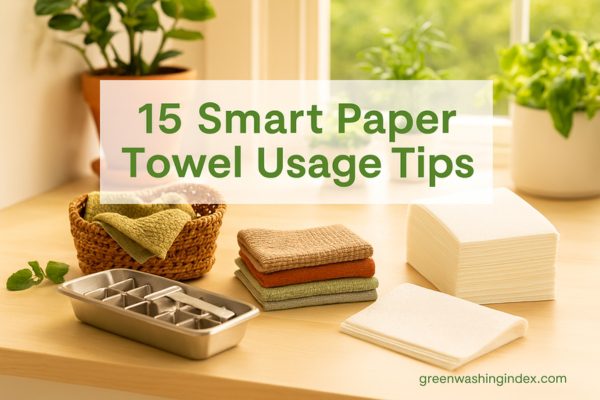
Americans use a staggering 13 billion pounds of paper towels every year, with the average household spending $110-220 annually on this single-use product. If you’re looking for paper towel usage tips that reduce waste while keeping your home clean, you’re in the right place.
This comprehensive guide reveals 15 practical strategies to cut your paper towel consumption by up to 80%. You’ll discover immediate reduction techniques, explore the best eco-friendly alternatives to paper towels, and learn how simple changes can save you hundreds of dollars yearly while protecting our environment.
From strategic placement changes to complete household transitions, these proven methods will transform how you approach cleaning and spill management. Let’s dive into the smart solutions that benefit both your wallet and the planet.
Understanding the true cost of paper towel dependency reveals why making changes matters more than you might think.
The environmental impact of our paper towel habits extends far beyond what meets the eye. Every year, approximately 110 million trees are cut down specifically to meet paper towel demand in the United States alone. That’s roughly 51,000 trees being harvested daily just to support our cleaning habits.
Water consumption tells an equally concerning story. Manufacturing paper towels requires about 130 billion gallons of water annually. To put this in perspective, producing just one roll demands approximately 37 gallons of water—enough for an average person’s daily drinking needs for over two weeks.
The environmental damage doesn’t end at production. When paper towels decompose in landfills, they produce methane gas, a greenhouse gas that’s significantly more potent than carbon dioxide in contributing to climate change.
Most households underestimate their annual paper towel expenses. Conservative estimates show families using 1.5-2 rolls every two weeks, translating to $110-220 in yearly costs. Heavy users can spend even more, especially when purchasing premium brands.
Workplace consumption adds another layer to this financial burden. The average person uses approximately 3,000 paper towels at work annually, equivalent to 40 pounds or 80 rolls per person. While employers bear this cost, it ultimately impacts everyone through reduced resources for other workplace improvements.
Consider the lifetime financial impact: a household spending $150 annually on paper towels will invest $4,500 over 30 years. This amount could fund significant home improvements, emergency savings, or sustainable alternatives that last decades.
| Usage Level | Annual Cost | 10-Year Cost | 30-Year Cost |
|---|---|---|---|
| Light (1 roll/month) | $60 | $600 | $1,800 |
| Moderate (2 rolls/month) | $120 | $1,200 | $3,600 |
| Heavy (1 roll/week) | $240 | $2,400 | $7,200 |
These practical strategies can reduce your consumption immediately without requiring any purchases or major lifestyle changes.
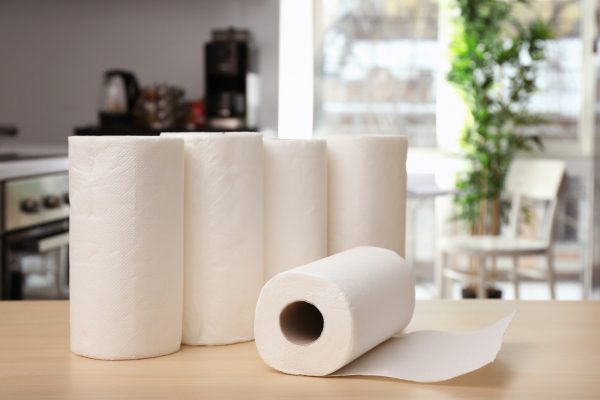
The simplest yet most effective change involves moving your paper towel roll from countertop to cabinet. This “out of sight, out of mind” principle works because convenience drives usage more than necessity. When reaching for a towel requires opening a cabinet, you’ll naturally pause to consider if it’s truly needed.
Replace the visible paper towel holder with a container of cloth alternatives. Keep clean dishcloths, microfiber cloths, or even folded old t-shirts in an attractive basket where your paper towels used to sit. This visual cue redirects your automatic reaching habit toward sustainable options.
Position these reusable alternatives near your sink and main cleaning areas. The key is making sustainable choices more convenient than wasteful ones.
Most people use full-size sheets for tasks requiring much less material. Start cutting your paper towel sheets into quarters for small spills, face cleaning, or light dusting. A single full sheet becomes four cleaning opportunities, immediately reducing consumption by 75%.
For select-a-size rolls, resist the temptation to pull extra length “just in case.” Train yourself to assess the actual size needed before tearing. Small coffee spills need small pieces, not half-sheet coverage.
Create a visual reminder by keeping scissors near your paper towel storage. This simple tool encourages conscious sizing decisions rather than wasteful grabbing.
Lightly used paper towels shouldn’t go directly to trash. If you’ve used a towel only for wiping clean surfaces or drying clean hands, let it air-dry and reuse it for secondary tasks like dusting baseboards or cleaning exterior surfaces.
Establish a “second-use” container near your cleaning supplies. Paper towels used for non-contaminated tasks can serve again for garage cleaning, car detailing, or outdoor projects before final disposal.
This approach doubles the value of each sheet while maintaining hygiene standards for different cleaning levels.
Match your paper towel size to the actual mess rather than defaulting to full sheets. Water spills need different coverage than oil splatters. Crumb cleanup requires minimal material compared to sauce accidents.
Train family members to assess before grabbing. Ask “How much do I actually need?” before tearing. This simple question prevents the automatic full-sheet grab that leads to waste.
Keep a mental inventory of alternatives for common tasks. Hand drying works perfectly with dedicated hand towels. Counter wiping functions better with microfiber cloths that can be rinsed and reused immediately.
Transitioning to reusable options doesn’t mean sacrificing cleanliness or convenience. These earth friendly paper towels alternatives often outperform traditional paper versions.
Microfiber cloths represent the gold standard for cleaning versatility. These synthetic fibers trap dirt and absorb liquids more effectively than paper towels while lasting for hundreds of wash cycles. A single microfiber cloth can replace approximately 300 paper towels over its lifetime.
Bar mop towels, commonly used in restaurants, offer exceptional durability for kitchen tasks. Their tight weave handles heavy-duty spills while maintaining integrity through repeated washing. Purchase these in bulk for the best value—a dozen bar mop towels costs less than a month’s worth of paper towels for most families.
Cotton dishcloths provide natural absorbency for everyday spills and cleaning. Choose 100% cotton varieties for maximum liquid absorption and easy laundering. Keep separate sets for different cleaning zones to prevent cross-contamination.
Swedish dishcloths blend cellulose and cotton to create super-absorbent cleaning tools that feel like paper towels but function like cloth. Each Swedish dishcloth can absorb 15 times its weight in liquids and replaces up to 17 rolls of paper towels throughout its lifespan.
Unpaper towels offer the familiar roll format using cloth materials. These snap-together alternatives roll and unroll like traditional paper towels but go straight into the washing machine when dirty. They’re perfect for households struggling to break the “grab from roll” habit.
Bamboo towels represent an eco friendly paper towel middle ground. While still disposable, bamboo grows rapidly and requires minimal processing compared to traditional wood pulp. Choose these for situations where reusable options aren’t practical.
Old t-shirts make excellent cleaning rags when cut into appropriate sizes. Cotton and cotton-blend shirts work best, while synthetic materials can leave streaks on glass surfaces. Cut shirts into 12-inch squares for optimal handling and washing convenience.
Worn-out bath towels transform into heavy-duty cleaning cloths perfect for garage work, car cleaning, or outdoor projects. Their thick pile absorbs large spills while their durability handles rough surfaces without tearing.
Flannel sheets and pillowcases create soft cleaning cloths ideal for delicate surfaces like electronics or eyeglasses. Their fine weave won’t scratch sensitive materials while providing gentle cleaning action.
Implementing targeted strategies for each area of your home maximizes effectiveness while addressing specific cleaning challenges.
Your kitchen likely represents 60-70% of household paper towel usage, making it the priority area for sustainable swaps. Establish dedicated dishcloth zones: one for food prep areas, another for appliance cleaning, and a third for general counter maintenance.
Keep a rotation system with clean cloths in a drawer and used ones in a designated container awaiting washing. This prevents the “no clean cloths available” excuse that leads to paper towel grabbing. Wash kitchen cloths in hot water with regular detergent to maintain hygiene standards.
For spill management, position a stack of old t-shirt rags in an easily accessible location. These handle everything from minor liquid spills to major cooking accidents. Unlike paper towels, cloth rags can be wrung out and reused during extended cleaning sessions.
Consider the green cleaning habits approach by keeping different cloth types for different tasks:
Bathroom paper towel usage typically focuses on hand drying and surface cleaning. Install adequate hand towel bars near each sink and replace towels every 2-3 days. This eliminates the primary reason people reach for paper towels in bathrooms.
For mirror and surface cleaning, keep a dedicated microfiber cloth in each bathroom. These cloths excel at streak-free cleaning on glass, chrome, and tile surfaces. Rinse with water between uses and machine wash weekly.
Establish a small cleaning caddy under each bathroom sink containing cloth alternatives for different tasks. This prevents the inconvenience excuse that drives paper towel usage when proper tools aren’t immediately available.
Utility rooms, garages, and workshop areas often consume significant paper towels for heavy-duty cleaning tasks. Create a rag system using old towels, worn clothing, and other textile discards. These areas don’t require pristine cleaning cloths—repurposed materials work perfectly.
Sort rags by material type and cleaning intensity. Keep cotton rags for general cleaning, synthetic materials for automotive work, and terry cloth towels for heavy absorption tasks. This organization ensures you grab appropriate materials without defaulting to paper towels.
Consider industrial cleaning cloths for truly demanding tasks. These specialized products cost more upfront but last significantly longer than paper towels while providing superior cleaning performance.
Before completely eliminating paper towels, understanding their most valuable applications helps you minimize the use of paper towel while maintaining household efficiency.
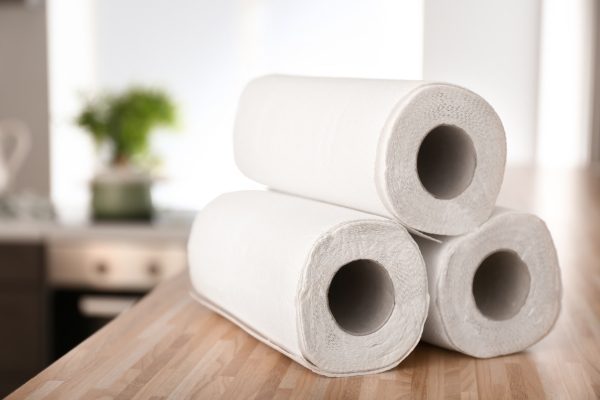
Paper towels excel in specific food preparation scenarios where cloth alternatives prove less practical. Use them to maintain vegetable freshness by wrapping leafy greens in slightly damp paper towels before refrigerating. This technique extends produce life by several days.
For oil absorption from fried foods, paper towels provide excellent results without the laundering challenges that come with oil-soaked cloth. Place fried items on paper towels briefly to remove excess oil, then transfer to serving plates.
Microwave splatter prevention works well with paper towel covers. While you could use microwave-safe covers, paper towels offer convenience for messy foods that would require extensive cover cleaning.
Cutting board stabilization becomes effortless with a damp paper towel placed underneath. This prevents dangerous sliding during food preparation—a safety application where the convenience justifies the cost.
Brown sugar softening requires minimal paper towel usage but delivers significant value. Place hardened brown sugar in a microwave-safe bowl, cover with a damp paper towel, and microwave for 20-30 seconds. The moisture revitalizes the sugar without waste.
For bread storage, placing a paper towel inside freezer bags prevents ice crystal formation that leads to soggy bread upon thawing. This application uses minimal material while preventing food waste.
Coffee filter emergencies can be solved with paper towels shaped to fit your brewing device. While not ideal for daily use, this substitution prevents missed morning coffee when regular filters run out.
DIY dryer sheets emerge from paper towels sprinkled with a few drops of essential oils. This creates natural fabric softening without harsh chemicals found in commercial products. Use this technique sparingly to avoid building dependency.
Temporary wet wipes form by moistening paper towels with gentle cleaning solutions. Perfect for quick cleanups when store-bought wipes aren’t available, but avoid making this a regular practice.
Successfully reducing paper towel waste requires strategic planning and gradual implementation to ensure long-term adoption.
Begin with honest usage tracking to understand your current consumption patterns. Keep a simple tally near your paper towel storage, marking each time someone uses a sheet. This awareness often reduces usage by 20-30% immediately.
Inventory your existing cloth materials before purchasing alternatives. Many households already own suitable substitutes—old towels, worn t-shirts, or unused washcloths. Repurposing existing materials reduces initial investment while providing immediate alternatives.
Plan your alternative acquisition strategy based on usage patterns identified during tracking. Heavy kitchen users need more dishcloths and microfiber options. Families with young children require easily accessible, child-friendly alternatives.
Start with your highest-usage area, typically the kitchen. Replace paper towel convenience with cloth convenience by positioning alternatives in the same locations. This reduces friction during the habit-changing process.
Implement the “paper towel pause” technique: before reaching for paper towels, count to three and consider whether a reusable alternative would work equally well. This brief pause interrupts automatic behavior and encourages conscious choice-making.
Address family resistance proactively by involving everyone in the selection and organization of alternatives. When family members choose their preferred cloth options and storage methods, adoption becomes much smoother.
Refine your system based on practical experience from the first month. Identify remaining friction points and adjust accordingly. Common adjustments include adding more alternatives in frequently used areas or changing washing schedules to ensure clean options remain available.
Establish maintenance routines that support long-term success. This includes regular washing schedules, replacement timelines for worn alternatives, and periodic system reviews to maintain effectiveness.
Track cost savings to reinforce positive behavioral changes. Calculate monthly savings and redirect this money toward something enjoyable—this positive reinforcement strengthens new habits.
Understanding the financial implications helps justify the transition and maintain motivation during challenging periods.
Quality microfiber cloths cost approximately $2-4 each but replace hundreds of paper towels over their lifetime. A starter set of 12 microfiber cloths ($30-40) provides enough alternatives for most households while lasting 2-3 years with proper care.
Cotton dishcloths and bar mop towels offer budget-friendly options at $1-2 per cloth. A dozen cotton alternatives costs $15-25 and provides excellent cleaning performance for most household tasks.
Swedish dishcloths represent premium alternatives at $6-8 each, but their exceptional absorption and longevity often justify the higher initial cost. Each Swedish dishcloth replaces approximately 17 rolls of paper towels.
Conservative calculations show modest paper towel users (1 roll monthly) can save $40-50 annually by switching to reusable alternatives. The initial $30-40 investment in cloth alternatives pays for itself within the first year.
Heavy users consuming 2+ rolls weekly can save $150-200 annually. For these households, the return on investment occurs within 2-3 months, making the financial case compelling.
Consider indirect savings from reduced shopping trips, storage space requirements, and disposal costs. These factors add another $20-30 in annual value for most households.
| Household Type | Annual Paper Towel Cost | Alternative Investment | First Year Savings | Break-Even Point |
|---|---|---|---|---|
| Light User | $60 | $35 | $25 | 7 months |
| Moderate User | $120 | $50 | $70 | 5 months |
| Heavy User | $200+ | $75 | $125+ | 4 months |
Increased laundry expenses represent the primary ongoing cost of reusable alternatives. Most households report adding 1-2 extra loads monthly, costing approximately $3-6 in additional water, electricity, and detergent expenses.
Water usage changes vary by household habits. Families who rinse cloths between uses may see slight increases in water consumption, while others experience decreases from reduced paper towel manufacturing demand.
Time investment shifts rather than increases. While washing cloths requires time, eliminating frequent paper towel shopping and storage management often creates net time savings.
Overcoming hesitations and practical challenges ensures successful long-term adoption of sustainable paper towel alternatives.
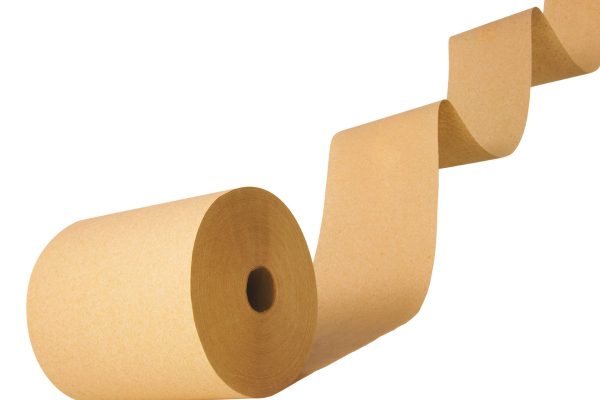
Proper cloth washing eliminates most hygiene concerns associated with reusable cleaning materials. Wash kitchen cloths in hot water (140°F+) with regular laundry detergent to kill bacteria and remove food residues effectively.
Implement color-coding systems to prevent cross-contamination between cleaning tasks. Use white cloths for food prep areas, colored cloths for general cleaning, and dark cloths for bathroom use. This visual system prevents accidental misuse.
Certain situations still warrant paper towel usage for optimal hygiene. Raw meat cleanup, bodily fluid management, and severely contaminated surface cleaning benefit from disposable materials that eliminate cross-contamination risks.
Quick cleanup solutions don’t require paper towels when proper alternatives are positioned strategically. Keep microfiber cloths in easily accessible locations throughout your home. These cloths handle most spills faster than paper towels due to superior absorption.
Guest accommodation strategies help maintain hospitality standards during the transition period. Keep a small supply of paper towels for guests who may feel uncomfortable using cloth alternatives. Position these discretely to avoid undermining your household’s new habits.
Emergency backup plans provide peace of mind during the adjustment period. Maintain a small paper towel reserve for genuinely challenging cleanup situations while working to expand your reusable alternatives toolkit.
Children adapt to new systems remarkably well when given age-appropriate responsibilities. Assign kids specific cloths for their cleanup tasks and involve them in the washing and organizing process. This ownership approach builds enthusiasm rather than resistance.
Partner cooperation improves when both adults participate in planning and implementation. Discuss concerns openly and adjust systems based on practical feedback. Successful household transitions require buy-in from all adults involved.
Gradual implementation reduces resistance more effectively than immediate elimination. Start with voluntary adoption in low-stress situations, then expand as comfort and habit formation develop naturally.
Creating custom reusable alternatives provides perfect sizing, material selection, and cost optimization for your specific needs.
Old t-shirts transform into excellent cleaning cloths with minimal effort. Cut shirts into 12-inch squares using sharp fabric scissors. Cotton and cotton-blend materials work best, while synthetic fabrics may leave streaks on glass surfaces.
Edge finishing isn’t necessary for most DIY cleaning cloths. Cotton materials develop naturally finished edges through washing and use. However, if fraying concerns you, use pinking shears to create zigzag edges that resist unraveling.
Size optimization depends on your primary uses. Larger squares (14-16 inches) work well for floor cleaning and large spills. Smaller squares (8-10 inches) suit countertop cleaning and general maintenance tasks.
Snap-together towel systems replicate the familiar roll format using cloth materials. Sew snaps along cloth edges to create connecting towels that unroll like traditional paper towels but wash and reuse indefinitely.
Roll-style unpaper towels require more advanced sewing skills but provide the exact paper towel experience with sustainable materials. Use cotton flannel for absorbency and add decorative stitching for professional appearance.
Storage solution creation helps organize your DIY alternatives effectively. Repurpose large mason jars, decorative baskets, or drawer organizers to keep different cloth types separated and easily accessible.
Washing best practices ensure maximum longevity from DIY alternatives. Use hot water for kitchen cloths to eliminate bacteria and food residues. Wash bathroom and general cleaning cloths in warm water with regular detergent.
Stain removal techniques help maintain cloth appearance and functionality. Pre-treat heavily stained cloths with enzyme-based stain removers. For oil stains, apply dish soap directly before washing. Avoid fabric softeners, which reduce absorption capacity.
Longevity maximization comes from proper rotation systems. Use different cloths for different tasks to prevent premature wear. Replace worn cloths as needed rather than struggling with ineffective materials that might tempt paper towel usage.
Understanding your positive contribution provides motivation and context for the effort required to change established habits.
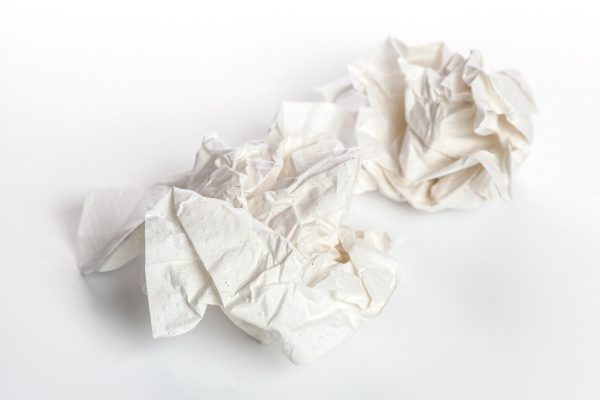
A typical household switching from paper towels to reusable alternatives saves approximately 2-4 trees annually. While this seems modest individually, it represents significant environmental preservation when multiplied across millions of households.
Water conservation numbers show more dramatic results. Eliminating two rolls of paper towels monthly saves roughly 1,480 gallons of water annually—enough for nearly 50 eight-minute showers. This conservation occurs during the manufacturing process you no longer support.
Waste reduction metrics demonstrate immediate landfill impact. The average household generates 15-30 pounds of paper towel waste annually. Eliminating this waste stream reduces your household’s total garbage output by 3-5%.
Collective impact potential becomes remarkable when communities embrace sustainable alternatives. If just 10% of American households reduced paper towel usage by half, we would save approximately 550,000 trees and 6.5 billion gallons of water annually.
Industry response to demand changes shows how consumer choices drive manufacturing decisions. As demand for traditional paper towels decreases, manufacturers invest more resources in sustainable alternatives and production processes.
Policy and regulatory implications often follow consumer behavior shifts. Reduced paper towel demand supports forestry conservation efforts and encourages corporate sustainability initiatives across the industry.
Other single-use item alternatives build on the foundation established by paper towel elimination. Consider transitioning to eco friendly products like reusable shopping bags, cloth napkins, and refillable cleaning supplies as next steps in your sustainability journey.
Comprehensive sustainability approaches address multiple environmental concerns simultaneously. The skills and habits developed while eliminating paper towels apply to reducing other wasteful consumption patterns throughout your household.
Long-term environmental goals benefit from systematic approaches that build sustainable habits over time. Each successful transition increases your confidence and capability for addressing larger environmental challenges.
When properly maintained, cloth alternatives can be more hygienic than paper towels. Hot water washing eliminates bacteria more effectively than single-use disposal. However, proper rotation and washing schedules are essential for maintaining hygiene standards.
Kitchen cleaning cloths should be washed after each day of use, especially those used for food prep areas. General cleaning cloths can be used for 2-3 days if properly rinsed between uses. Bathroom cloths should be washed every 2-3 days or after heavy use.
Old towels and terrycloth materials handle the messiest spills most effectively. For truly challenging cleanups involving hazardous materials, paper towels may still be the safest option to prevent cross-contamination.
Absolutely. The goal is reduction, not elimination. Reserve paper towels for situations where hygiene concerns outweigh environmental considerations—raw meat cleanup, bodily fluids, or heavily contaminated surfaces.
Start with leading by example rather than enforcing rules. Involve family members in selecting alternatives and organizing systems. Focus on the financial benefits and celebrate savings milestones to maintain motivation.
Repurposing old t-shirts and towels provides the most cost-effective starting point. This approach requires no initial investment while providing immediate alternatives for testing different household applications.
Transform your household habits with this structured approach that builds sustainable changes gradually and effectively.
Begin by tracking your current paper towel usage without trying to change habits. Simply mark each use on a sheet near your paper towel storage. This awareness alone typically reduces consumption by 20-30%.
Implement the strategic placement change immediately: move your paper towel roll to a cabinet and place cloth alternatives in the visible location. This single change creates the biggest impact with minimal effort.
Start gathering cloth alternatives from existing household items. Cut up old t-shirts, designate worn towels for cleaning use, and organize these materials in easily accessible containers.
Focus on one room at a time, typically starting with the kitchen where most paper towel usage occurs. Establish cleaning cloth stations and practice using alternatives for routine tasks like counter wiping and spill cleanup.
Address challenges as they arise rather than abandoning the effort. If cloth alternatives aren’t working for specific tasks, research specialized solutions or adjust your approach rather than reverting to paper towels.
Involve family members by explaining the environmental and financial benefits. When people understand the “why” behind changes, compliance improves significantly.
Evaluate your progress and identify remaining high paper towel usage areas. Focus optimization efforts on these persistent usage patterns to maximize further reduction.
Calculate your savings from the first month and plan how to use this money positively. Whether it’s a small treat or addition to savings, this positive reinforcement strengthens new habits.
Plan your long-term strategy for maintaining these changes. Consider which cloth alternatives need replacement, how to handle seasonal variations in usage, and ways to continue improving your system.
Ready to start reducing your environmental impact while saving money? Begin today by moving your paper towel roll to a cabinet and placing a basket of cloth alternatives in its place. This simple change launches your journey toward more sustainable household habits.
The path to eco-friendly alternatives doesn’t require perfection—just consistent progress. Every paper towel you don’t use represents trees preserved, water conserved, and money saved. Start with one small change today, and build the sustainable household practices that benefit both your family and our planet.
Your commitment to these changes joins a growing movement of environmentally conscious households proving that small individual actions create significant collective impact. Take the first step today, and discover how easy it can be to live more sustainably while maintaining the cleanliness and convenience your family expects.
